
A cyclic process ABCA is shown in the volume – temperature diagram. Process on the
volume – temperature diagram is:
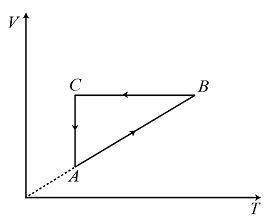
A.
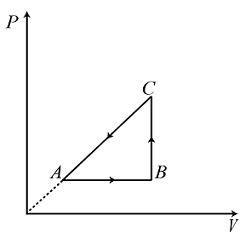
B.
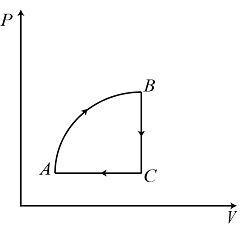
C.
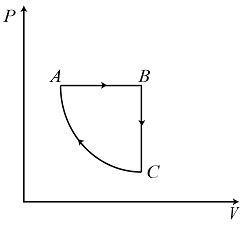
D.
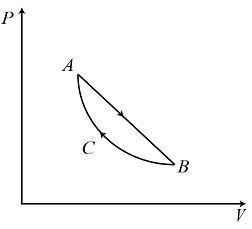





Answer
526.2k+ views
Hint:The process AB represents isobaric process, BC process represents isochoric process and CA process represents isothermal process.
Now, see the graph which matches these conditions.
Complete step-by-step solution:
The thermodynamic process which occurs when the pressure remains constant is called the Isobaric process. When the volume is expanded or contracted which neutralizes the pressure caused by the transfer of heat, then the isobaric process is obtained. In this process, there are some internal energy changes. In the volume – temperature graph, during this process volume will increase with increase in temperature.
In a thermodynamic process, when the volume remains constant then this process is said to be an isochoric process. The volume in this process is constant, therefore, work done by the system is zero. As in this process volume is constant, so in volume – temperature graph volume will be unchanged and temperature varies.
The process in which the temperature of the thermodynamic system remains constant then, this thermodynamic process is called isothermal process. This process has temperature as constant, therefore, in the volume – temperature graph the temperature will be unchanged and volume will change.
According to the question, in the volume – temperature graph AB is inclined straight line, in line BC the volume does not change and temperature increases and in the line CA the temperature is constant and volume varies.
Therefore, AB represents isobaric process, BC represents isochoric process and CA represents isothermal process.
The option (C) satisfies all the above criteria therefore, the correct option is (C).
Note:- There are two possible outcomes of an isobaric process:
->The system does the positive work when the system expands.
->The system does the negative work when the system contracts.
Now, see the graph which matches these conditions.
Complete step-by-step solution:
The thermodynamic process which occurs when the pressure remains constant is called the Isobaric process. When the volume is expanded or contracted which neutralizes the pressure caused by the transfer of heat, then the isobaric process is obtained. In this process, there are some internal energy changes. In the volume – temperature graph, during this process volume will increase with increase in temperature.
In a thermodynamic process, when the volume remains constant then this process is said to be an isochoric process. The volume in this process is constant, therefore, work done by the system is zero. As in this process volume is constant, so in volume – temperature graph volume will be unchanged and temperature varies.
The process in which the temperature of the thermodynamic system remains constant then, this thermodynamic process is called isothermal process. This process has temperature as constant, therefore, in the volume – temperature graph the temperature will be unchanged and volume will change.
According to the question, in the volume – temperature graph AB is inclined straight line, in line BC the volume does not change and temperature increases and in the line CA the temperature is constant and volume varies.
Therefore, AB represents isobaric process, BC represents isochoric process and CA represents isothermal process.
The option (C) satisfies all the above criteria therefore, the correct option is (C).
Note:- There are two possible outcomes of an isobaric process:
->The system does the positive work when the system expands.
->The system does the negative work when the system contracts.
Recently Updated Pages
NCERT Solutions For Class 12 Maths Three Dimensional Geometry Exercise 11.2

NCERT Solutions For Class 11 Maths Sets Exercise 1.4

NCERT Solutions For Class 11 Maths Miscellaneous Exercise - Limits and Derivatives

NCERT Solutions For Class 12 Maths Integrals Exercise 7.9

NCERT Solutions For Class 11 Biology In Hindi - Excretory Products And Their Elimination

NCERT Solutions For Class 2 Hindi Sarangi - Gire Taal Mein Chanda Maama

Trending doubts
Which are the Top 10 Largest Countries of the World?

Differentiate between homogeneous and heterogeneous class 12 chemistry CBSE

Why is the cell called the structural and functional class 12 biology CBSE

a Tabulate the differences in the characteristics of class 12 chemistry CBSE

Who discovered the cell and how class 12 biology CBSE

Draw a labelled sketch of the human eye class 12 physics CBSE




